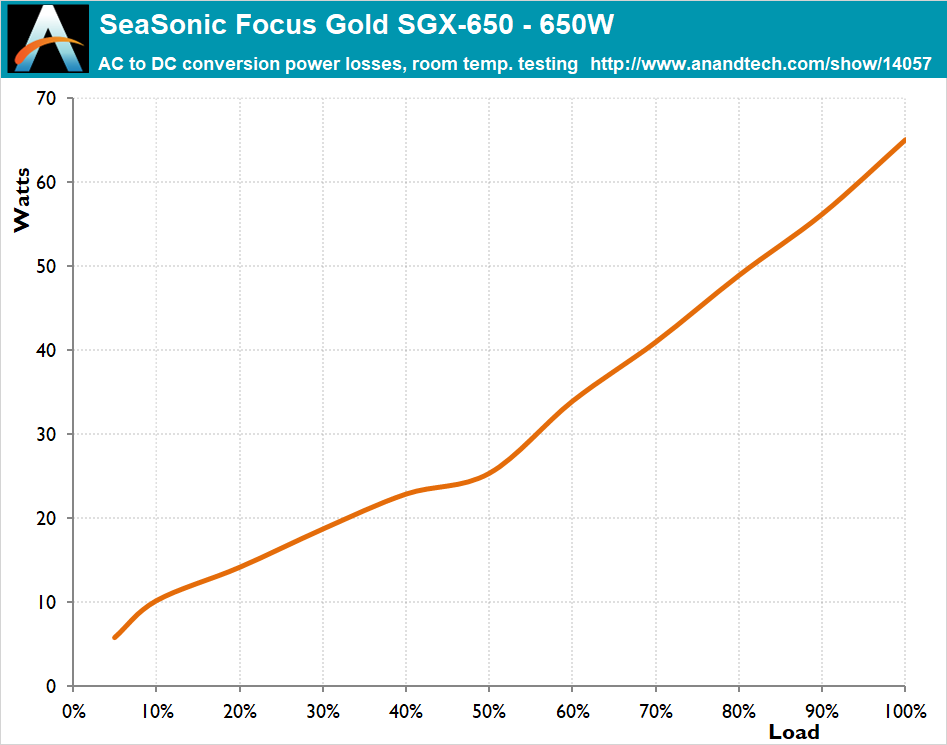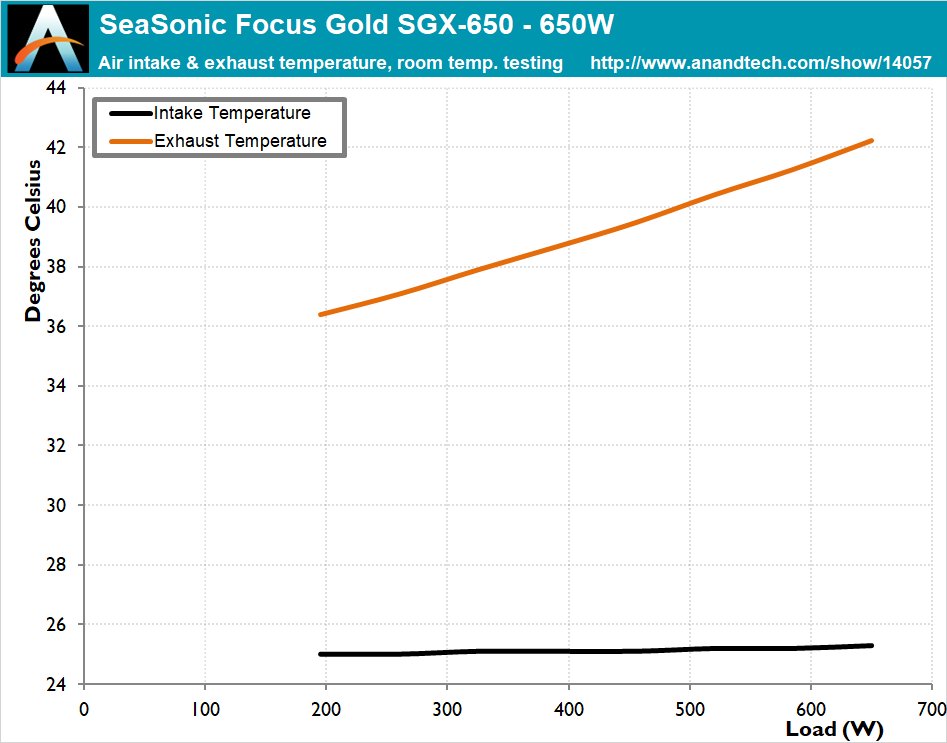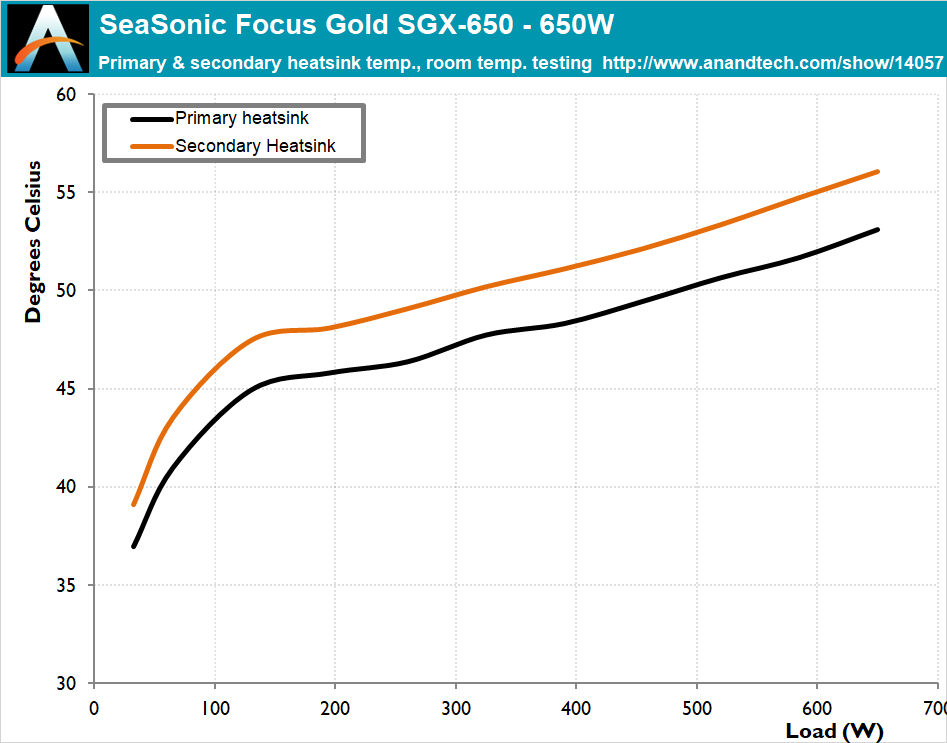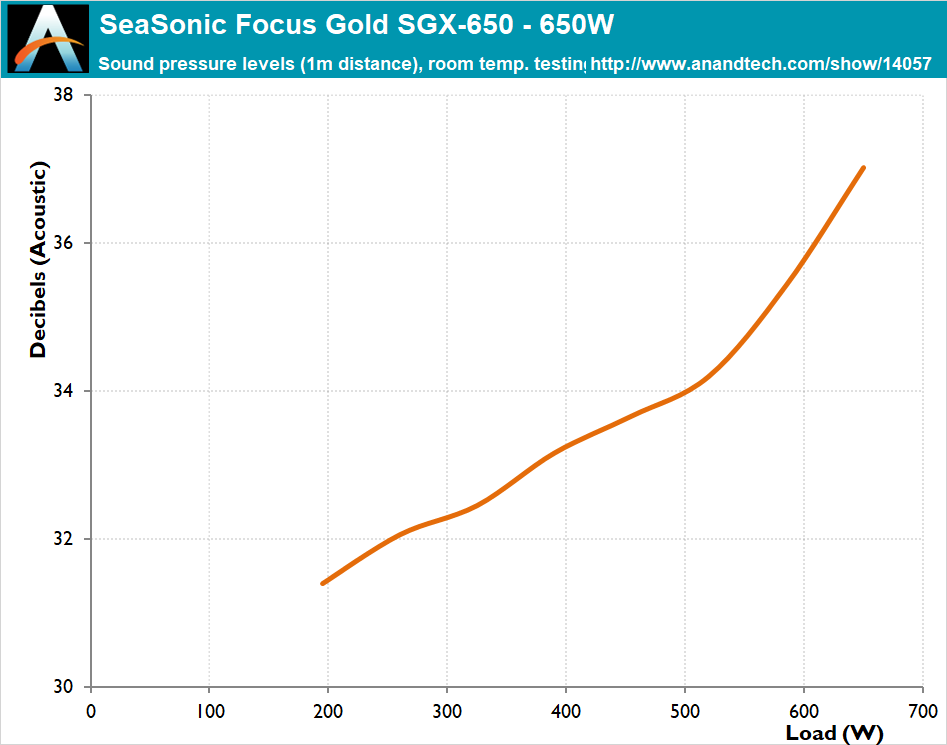The SeaSonic Focus Gold SGX-650 SFX Power Supply Review: Seasonic Starts off SFX With a Stunner
by E. Fylladitakis on March 7, 2019 8:30 AM EST- Posted in
- Cases/Cooling/PSUs
- Seasonic
- PSUs
- SFX
- Focus Gold SGX
Cold Test Results
For our PSU testing, we are using various high precision electronic loads with a maximum power draw of 2700 Watts, a Rigol DS5042M 40 MHz oscilloscope, an Extech 380803 power analyzer, two high precision UNI-T UT-325 digital thermometers, an Extech HD600 SPL meter, a self-designed hotbox and various other bits and parts. For a thorough explanation of our testing methodology and more details on our equipment, please refer to our How We Test PSUs - 2014 Pipeline post.
The efficiency of the SeaSonic Focus Gold SGX-650 SFX PSU is very good. Although the unit technically fails to meet the 80Plus Gold certification requirement for 90% efficiency at a 20% load when powered from a 230V AC source, it showcased exceptional efficiency across the entire load range. Conversely however, the efficiency drop when the unit is powered from a 115V AC source is very small, from practically zero at low loads up to a maximum of about 0.75%. This allows the unit to easily surpass the 80Plus Gold requirements for an input voltage of 115V AC.
SeaSonic designed the thermal control of the Focus Gold SGX-650 to utilize a semi-fanless mode, meaning that the fan will start only after the load is greater than about 180 Watts or when it is absolutely necessary. As expected, the internal temperatures of the PSU rise sharply under low loads due to the lack of active cooling, but they quickly stabilize once the fan starts. Considering the size and compactness of the design, the internal temperatures of the Focus Gold SGX-650 are quite low.
Despite the use of a low-profile 120 mm fan, it seems that the cooling requirements of the Focus Gold SGX-650 are low. Even when the fan does start, it barely reaches audible levels even when the PSU is heavily loaded. Assuming that it takes a rather powerful system to heavily load a 650 Watt PSU, it is very likely that any sound coming from the PSU will be masked by the noise of other components.















38 Comments
View All Comments
Sivar - Thursday, March 7, 2019 - link
I thought I'd report a typo: "Although the selection of **hgih**-end SFX PSUs"Thank you for the article.
Ryan Smith - Thursday, March 7, 2019 - link
Thanks!SonicIce - Thursday, March 7, 2019 - link
There was a short period where their high end PSU's were manufactured in Taiwan with a 12 year warranty. Wonder why they went back to China?Hul8 - Thursday, March 7, 2019 - link
The Focus series is not high end, that's why.Alistair - Thursday, March 7, 2019 - link
It's a review without a comparison to the Corsair model? What kind of review is that...Alistair - Friday, March 8, 2019 - link
That came out more negative than I meant it to. But I mainly want to know what advantages the Seasonic model might have vs. the Corsair one.FXi - Thursday, March 7, 2019 - link
This might make a very nice and quiet PSU for the Alienware amplifierR3MF - Friday, March 8, 2019 - link
"Opting to go with a 1200mm anyhow, SeaSonic has lengthened the chassis slightly, so the Focus Gold SGX-650 measures 25 mm longer than a standard SFX PSU"The missing part that seems pretty crucial for a product review:
"We call this SFX-L", folks. It won't fit in a traditional SFX chassis, but that's fine because it's better. But as responsible reviewers, we thought you should know that."
Your welcome. ;)
PeachNCream - Friday, March 8, 2019 - link
It's a good point, but the manufacturer is pretty clear about it on sites where the PSU in question can be purchased. There are a number of SFF cases that will accept SFX-L power supplies too because its difficult to cram mid- to high-output circuitry into a standard SFX supply. I do agree that it ought to be more clearly noted in the article, but there are other places where a potential buyer will have a chance to discover the size before making a purchase.justareader - Friday, March 8, 2019 - link
The whole article is about SFX with no explanation. SFX is mention over and over and over. Does the author know? Does not matter this is a tech site, acronyms should always be stated complete at least once.